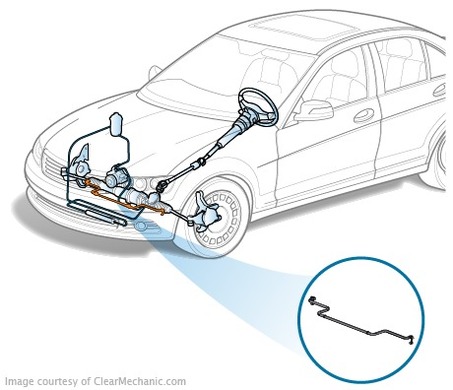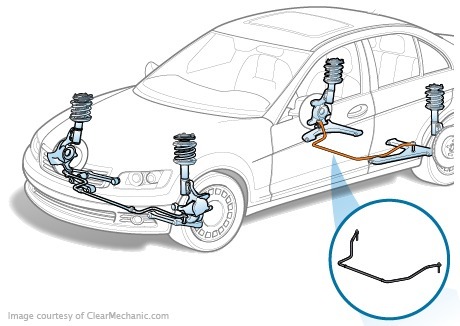
The transverse stability stabilizer is an elastic cross-spacer in the suspension and stretch suspension of the vehicle.
In the simplest form, the transverse stability stabilizer is a steel rod of shape. But in modern cars, because of the compact space of the units, the stabilizer is given a more complicated form. There is a round profile in the center of the bar. The material shall be used by a special elastic steel with good resistance of curling. The average part of the stabilizer is mounted through the support of the body, the imm or the frame of the car, and the ends to the left and right levers or the bridge of the bridge.
The stabilizer is used both on the front and on the rear axle.

Principle of the action of a transverse stability stabilizer
In the side seats, the ends of the stabilizer are moved to different sides-one part up and one down. Because of this, the middle part of the stabilizer is twisted round like a spring, and it prevents it from being christed. In the case of the operation of the transverse stability stabilizer, it tries to lift the opposite side of the body and the opposite side.
If you move the stabilizer into one direction at the same time, the stabilizer does not work on the supports.
Cross-stability stabilizer and pros
The main drawback of the transverse stability stabilizer is that it reduces the suspension of the suspension. This has a negative impact on the traffic of cars intended for off-road traffic, as a wheel does not drop the stabilizer, loses contact in the air and loses contact with the surface. As a result, the car gets stuck.
Interesting facts about the transverse stability stabilizer
When creating a Nissan Patrol SUV to improve the behaviour of the vehicle in off-road conditions, the engineers have installed a rear-end lateral stability voltage regulator. To do this, you have installed the hydraulic cylinders instead of the two stabilizer stacks. In order to prevent accidents, the driver may have switched off the rear stabilizer only at speeds below 20 km/h, that is, in fact, the system could only work if the driver was not moving in the mud.
An interesting system called KDSS installs Toyota on the Land Cruiser 200 and Prado 150. With this system, the car is well managed on the asphalt and does not pass in the off-road. The main system of the system in the installation on the front and rear axis of the hydraulic cylinders instead of one of the central stabilizer feet. The electronics shall monitor the position of the bodywork and alter the characteristics of the front and rear stabilizers of the transverse stability, depending on the road conditions.









